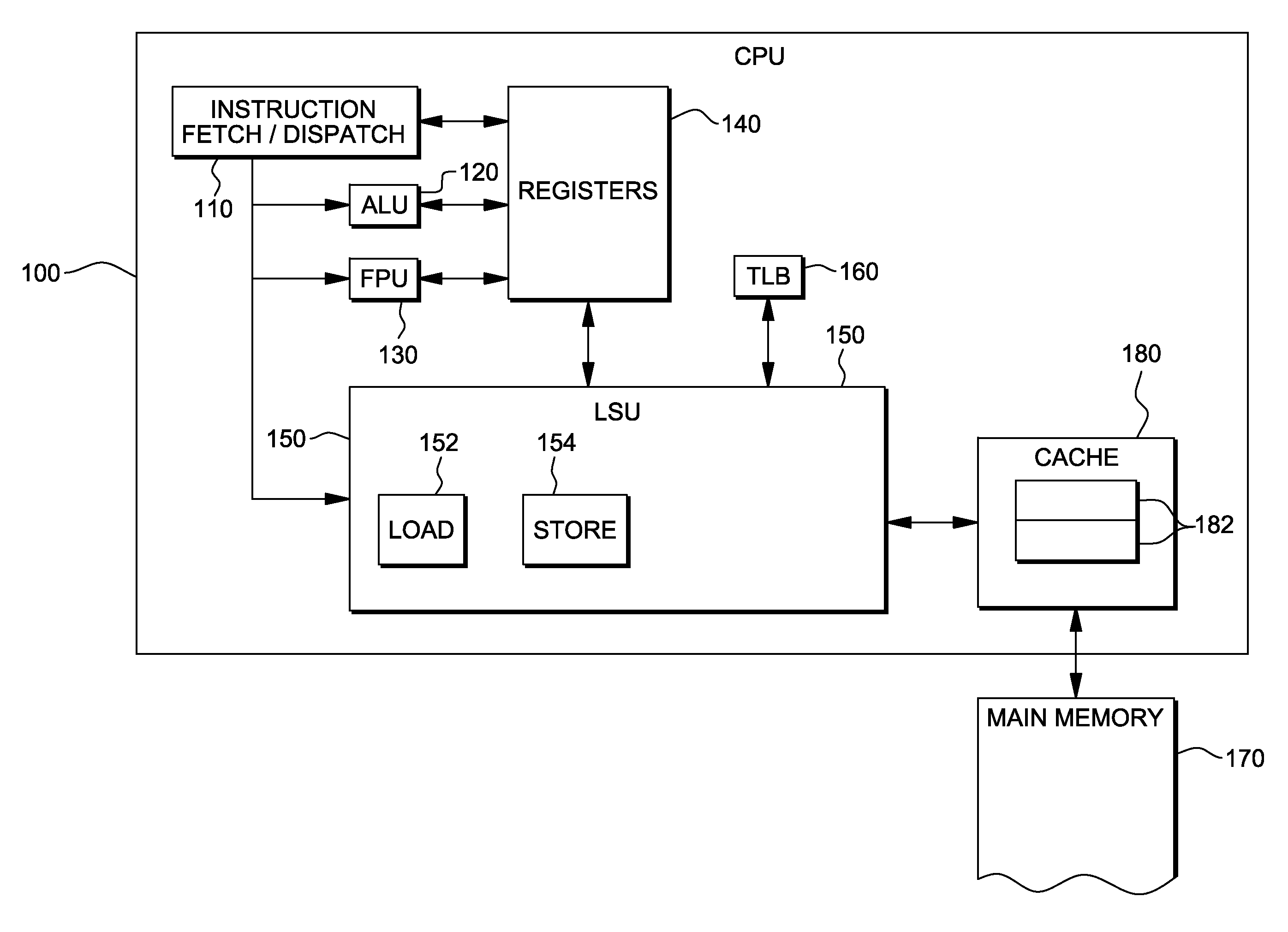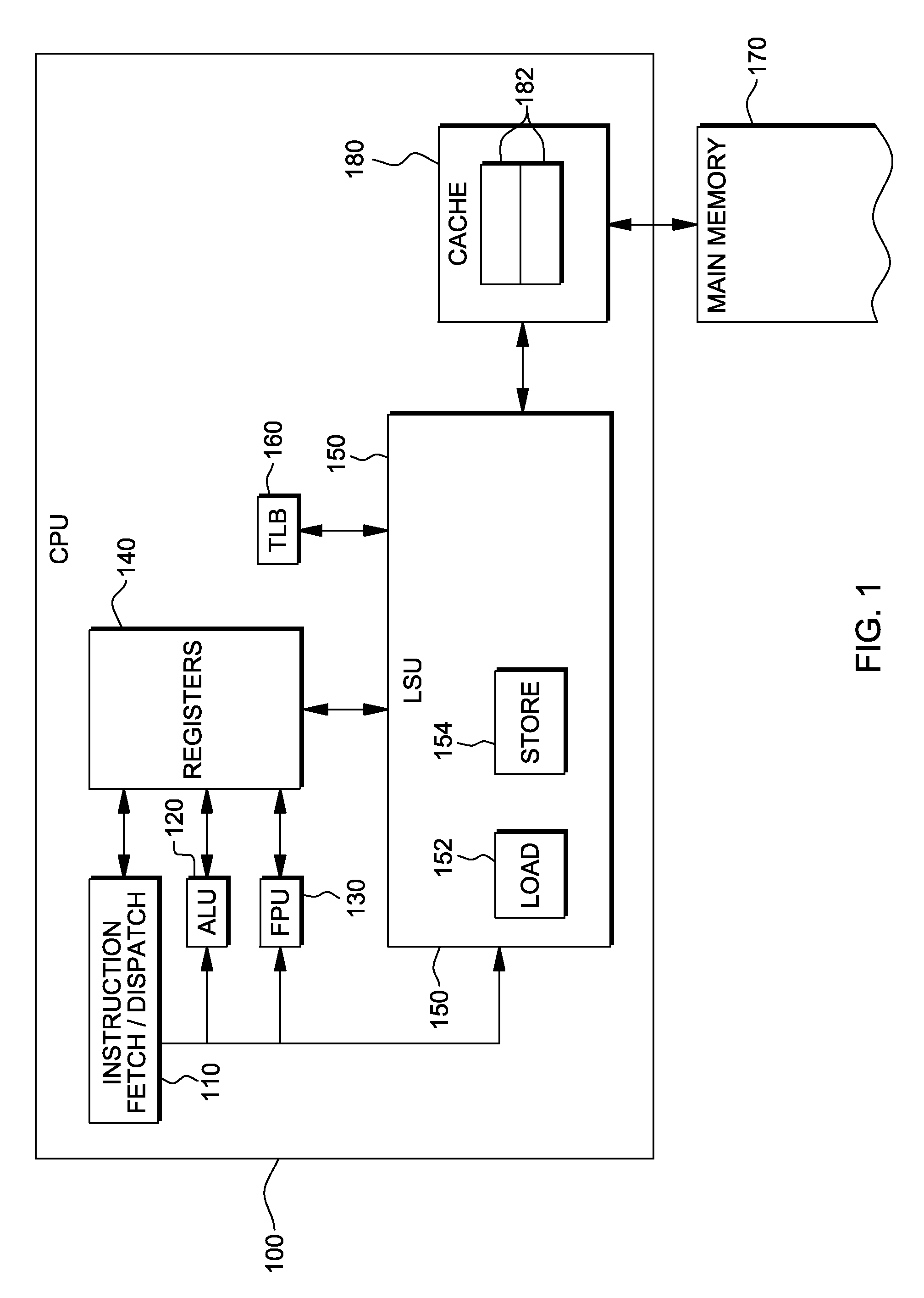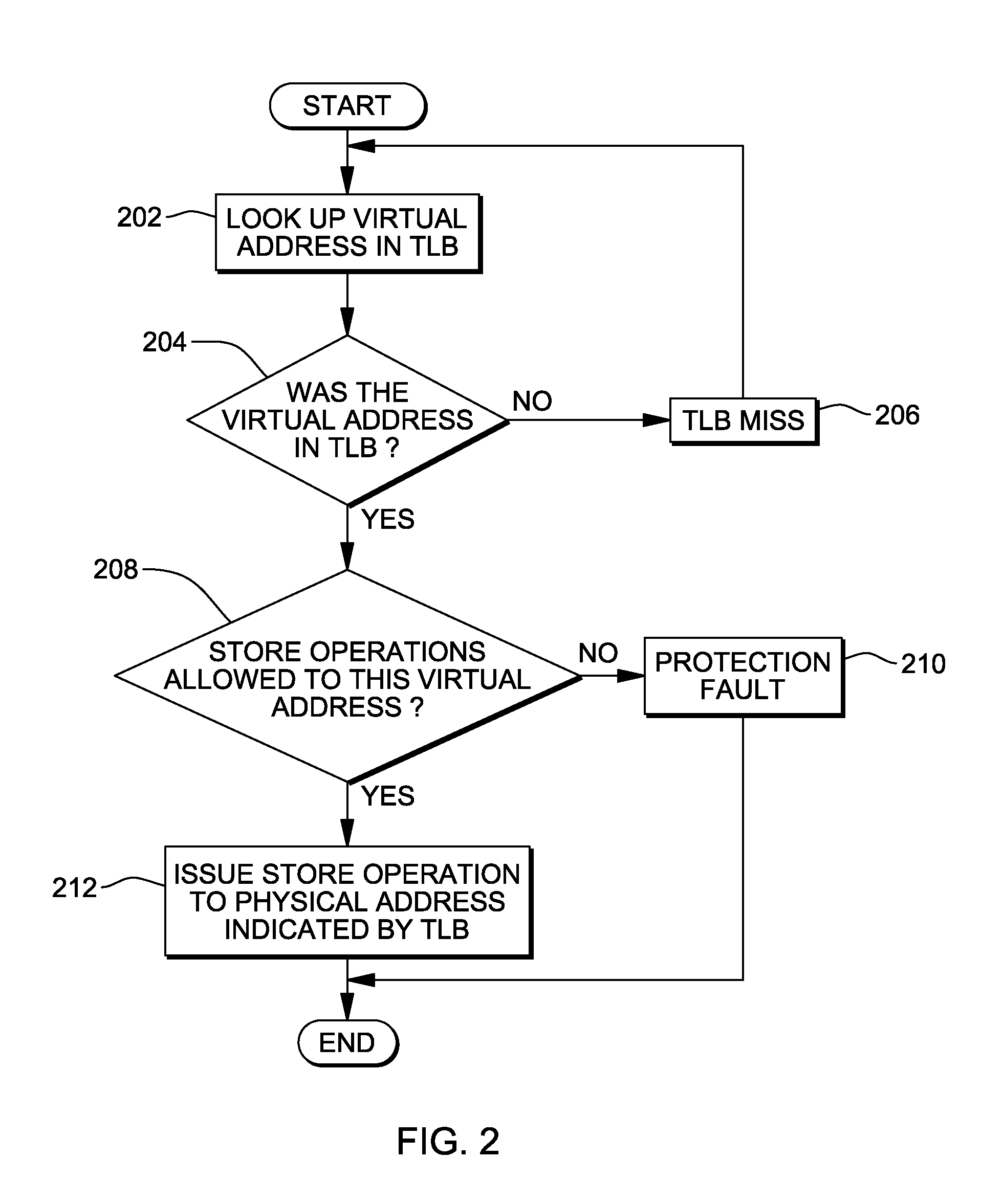Facilitating data coherency using in-memory tag bits and tag test instructions
a data coherency and tag technology, applied in the field of facilitating data coherency using in-memory tag bits and tag test instructions, can solve the problems of extra overhead during translation time, difficult to do correctly, etc., and achieve the effect of reducing the number of times cod
- Summary
- Abstract
- Description
- Claims
- Application Information
AI Technical Summary
Benefits of technology
Problems solved by technology
Method used
Image
Examples
Embodiment Construction
[0028]It is advantageous to receive notification when certain locations in address space of a running software application are modified. In addition to being useful for debugging purposes, there are situations in which such a feature is useful during normal program execution. Principally for performance reasons and processing efficiency, it is sometimes desirable for a hardware or software module to maintain an alternative representation of some data. When this alternative representation has been created, a difficulty arises when it is possible for the original data to be modified without notifying the module that is maintaining the alternative representation. In this situation, it is useful to obtain notification when attempting to access the alternative representation that the original data has changed so that the alternative representation (which is now inconsistent with the modified original data) can be discarded and replaced with a new alternative representation obtained from ...
PUM
 Login to View More
Login to View More Abstract
Description
Claims
Application Information
 Login to View More
Login to View More - R&D
- Intellectual Property
- Life Sciences
- Materials
- Tech Scout
- Unparalleled Data Quality
- Higher Quality Content
- 60% Fewer Hallucinations
Browse by: Latest US Patents, China's latest patents, Technical Efficacy Thesaurus, Application Domain, Technology Topic, Popular Technical Reports.
© 2025 PatSnap. All rights reserved.Legal|Privacy policy|Modern Slavery Act Transparency Statement|Sitemap|About US| Contact US: help@patsnap.com



